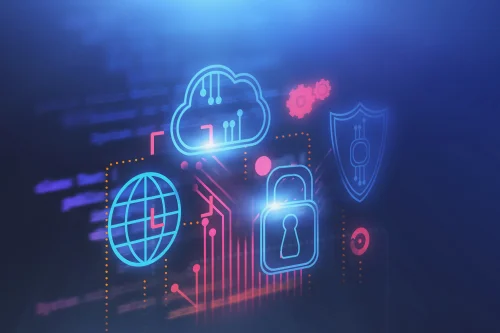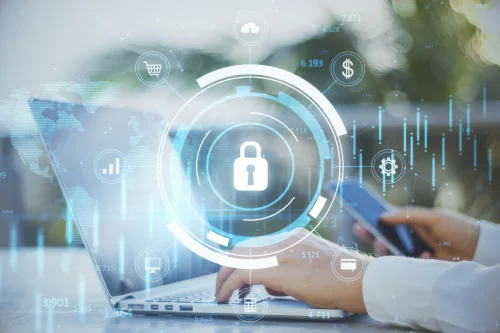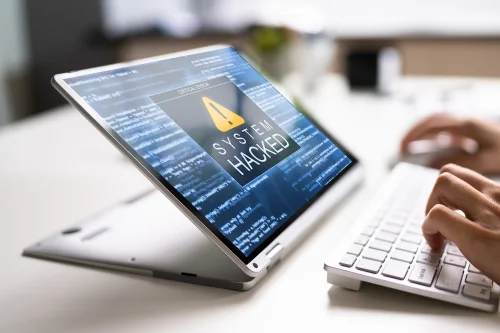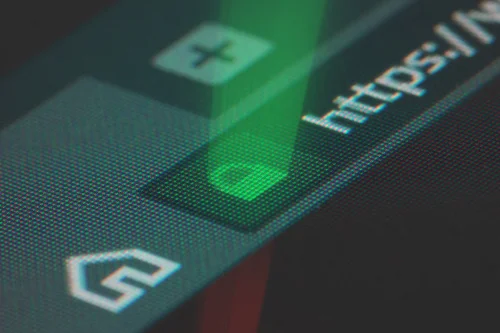
Thank you
Our team of industry domain experts combined with our guaranteed SLAs, our world class technology .


Get Immediate Help

Key Points
The world and everything in it is constantly evolving. Change is the only constant, and we see it every day. From the fast-paced social media trends to the changes in the financial and DeFi markets, life as we know it is simply dynamic. This premise is also true with technology, which keeps advancing every quarter. The ease, convenience and turnover that IoT, interconnected devices and the entire digital revolution bring to businesses, individuals and corporations are the reason for its mass adoption. With the Covid-19 pandemic, more businesses transitioned to a remote work culture. Thus, lax cybersecurity has never been more detrimental than now.
These technological advancements might have glamorous benefits, but they come with repercussions, one of which is cyber threats. Within the current business landscape, cyber threats are expected, making cybersecurity a non-negotiable priority for thriving businesses. Cyber threats manifest in multiple forms and different network layers. They could manifest as data breaches, ransomware, phishing attacks, etc., from devious criminal masterminds, or they could be triggered by network vulnerabilities that threat actors exploit.
Many businesses have threat actors latched onto their networks but don’t know it because of the masking techniques these cybercriminals use. These techniques permit them to access and operate undetected in a network environment. They’re so stealthy that a threat actor may be latched onto your network as we speak. However, the worst part of the looming cybersecurity war is that the attack patterns of these threat actors escalate with technological advancements. Thus, if your business must survive, your cybersecurity strategies must preempt and evolve ahead of these threat patterns. One way to do this is to keep track of the latest trends in cybersecurity and apply them to your company’s security measures.
Cybersecurity trends emerge yearly, and the best cybersecurity companies have the foresight to predict the most likely future trends. These trends are deemed viable due to certain metrics like technological and economic expectations. Here are the emerging cybersecurity trends for 2023 that made Microminder’s top 10 list.
Microminder’s Top 10 Emerging Cybersecurity Trends For 2023

Each of Microminder’s latest cybersecurity trends tackles an emerging cybersecurity vulnerability, and they include the following:
1. User Awareness
Research has shown that cyber hygiene practices can prevent about 80% of data breaches, while about 97% of people cannot differentiate between a phishing email and a legitimate one. In addition to these numbers, ISACA’s UK cybersecurity perception study revealed that one in three people preferred a fast internet connection over a secure one, and 54% of UK staff do not receive cybersecurity training from their employers.
Regarding these figures, cybersecurity and user awareness are in severe demand. Several people worldwide are oblivious to cybercriminals’ patterns and behaviours, and mistakes might cost businesses more than they can recover from. Thus, sensitising the entire workforce on cybersecurity awareness will be a priority for corporations in 2023.
Therefore, we’ll experience more cybersecurity training, seminars and workshops in the workplace. These awareness workshops will centre on handling and disseminating confidential data.
2. IoT Vulnerability And 5G Network
The convenience associated with IoT, Cloud and 5G is why they’re being massively incorporated into businesses and households. IoT is so widespread that Gartner analysts predict there’ll be over 43 billion IoT-connected devices worldwide by 2023. However, the more interconnected devices there are, the more entry points for cyber attackers. When these IoT devices are linked with 5G networks, they unlock a new era of interconnectivity that is more susceptible to vulnerabilities that attackers could easily exploit.
On its own, 5G is a fairly new landscape that cybersecurity vendors are still trying to pave and create security solutions for. Every layer of its latency-free connectivity could bring on network attacks. Regarding vulnerabilities, IoT devices like home appliances, wearables, industrial machinery, etc., are not often designed with security priorities as they aren’t meant to store data. However, recent studies have shown that while these devices might not host sensitive information, they might be linked to other devices that do.
In 2023, especially with the increased popularity of hybrid and remote work, government initiatives will instigate the design of anti-breach security features for every IoT device manufactured with or without 5G connectivity. This rollout may include a labelling system for such devices.
3. Artificial Intelligence And Machine Learning

Artificial intelligence and machine learning algorithms are already the most sought-after tools for cybersecurity vendors. AI and machine learning applications like pattern recognition help comb through vast amounts of data to determine patterns that indicate a threat in real time – faster than human efforts can. IBM even reveals that companies that use AI and automation for threat and breach detection save an average of $3 million. However, just as cybersecurity experts leverage this technology, hackers are gaining proficiency in circumventing detection. More recently, hackers have used AI to clone the voices and appearances of senior executives to access sensitive digital assets and authorise fraudulent transactions.
So, as cybersecurity specialists, you can see we have our work cut out. Nevertheless, in 2023, we expect an increase in the purchase of AI and machine learning products by both cyber attackers and defenders. Also, concerning machine languages and natural language processing, cyber attackers will begin using programming languages like Rust, which most cybersecurity tools aren’t equipped to handle, thus permitting them to access and remain in networks undetected. Hence, in 2023, we expect the best cybersecurity vendors to accommodate threat mitigation systems that circumvent threats built on diverse programming languages, even the uncommon ones.
4. Automotive Hacking
Cybersecurity isn’t confined to specific devices or companies. Cybercriminals can hack any smart device, and cybersecurity should be considered a necessity, just like home or office security systems. Thus, individuals should promote an awareness culture around cybersecurity. With the impending effects of global warming, world leaders are exploring diverse methods to minimise their country’s carbon footprint. These leaders are beginning to prioritise green initiatives like electric cars, which President Biden advocates for. As such, EV manufacturing is scheduled to skyrocket in 2023.
Electric cars and autonomous or driverless vehicles might be great for the environment because of their zero emissions, but they are built on complex mechanisms that require strict cybersecurity measures. These vehicles possess advanced driver assistance features, including cruise control, door locks and airbags. They also possess BlueTooth and WiFi receivers for communication that serve as an entry point for hackers. Hackers can gain control of the vehicle, access the microphones, eavesdrop on conversations and gain valuable information. Hence, in 2023, there’ll be an increase in EV cybersecurity measures to checkmate automotive hacking.
5. Transition From Ransomware Attacks

Ransomware attacks were the common denominator in the top 10 cybersecurity threats from 2017 to 2022. If history serves us any use, ransomware attacks have been a major monetisation source for threat actors. From the WannaCry ransomware attack of 2017 to the Colonial Pipeline attack in 2021, ransomware is one of the most devious cyber attacks.
Cyberattackers go after all types of organisations regardless of their size or niche. Private companies, nonprofits, consulting firms, corporate businesses and even governmental bodies are all susceptible to ransomware attacks. While some of these attacks have been instigated by independent cyber hacking groups like Nobelium, others could be from hackers without notoriety. Ransomware attacks can even be deployed against countries and governments by other nation-states.
Companies and institutions that have fallen victim to ransomware attacks failed to prioritise certain cybersecurity measures, such as:
Regardless of the perpetrator, ransomware attacks cannot be ignored, especially as they can significantly damage entire corporations. However, in 2022 there was a decline in ransomware attacks. This decline possibly stems from the intensive cybersecurity measures that larger corporations have adopted to fight back. Cybersecurity experts also suggest this decline is because attackers are evolving their strategies and transitioning to more discreet techniques to remain undetected while syphoning millions from institutions and governments.
Nevertheless, for 2023, ransomware attacks will mostly spike for medium-sized companies. Larger corporations might witness the same or less amount of attacks. However, cyber attackers may target enterprise resource planning (ERP) applications more. Therefore, organisations prioritising confidentiality must create cybersecurity protocols to secure their business applications and their most valuable data and resources.
6. Hackers For Hire

As cybersecurity experts fortify the network environments of corporations with evolved techniques and measures, they strengthen the penetration barrier against less experienced or less technical threat actors. This creates a demand for advanced or high-profile cybercriminals, which expands the cyber crime-as-a-service ecosystem. Supposing the global economy takes another downturn as it did during the Covid-19 pandemic, anonymous masterminds and their hackers may leverage the consequences of an economic recession for a great payday.
Thus, depending on the state of the global economy and geopolitical tensions in 2023, the dark web will be saturated with hackers-for-hire, which can only be detrimental for corporations with ineffective cybersecurity technologies. Hackers-for-hire are also a cybersecurity threat to governments as they are tools that instigate cyber warfare between nation-states.
7. Automated Security Systems
The high-profile 2021 Colonial Pipeline ransomware attack, which cost the Texas-based pipeline $44 million, could’ve been prevented by an automated internal review system and AI-driven analytics. Such a system provides visibility into access permissions, individual accounts, apps, assets and device usage within the network. Thus, it shifts the organisation’s security approach from reactive to proactive as it identifies vulnerabilities, inhibiting the success of threat attacks.
In 2023, more corporations are expected to adopt automated security systems that identify and flag vulnerable entry points like legacy VPNs linked to their network environments. Such systems use threat intelligence signals to enhance the defence and security of the workflow and processes. Regarding automated security, large businesses with many vendors and employees signed onto their network can face manual provisioning that can lead to inactive IDs and shadow accounts, which can easily be exploited.
Hence, an automated ID governance security system would significantly reduce the noncompliance risks and credentials theft while outsourcing access approvals. Armed with this information and knowledge that JBS Foods’ ransomware attack could’ve been prevented by an automated ID governance system, enterprises will likely include automated security systems in their cybersecurity arsenal in the coming years.
8. Zero Trust Acceleration
Zero Trust is a security framework that requires the continuous authentication, authorisation and validation of users within and outside the corporation’s network before they can access data and applications. It’s a great framework that eliminates unmitigated access to company data, thereby securing remote and hybrid cloud environments from ransomware threats.
Zero Trust will transition from being a buzzword in 2022 to a full-on movement in 2023. Its adoption will accelerate, and while corporations are inching to implement Zero Trust concepts, these implementations will likely fail without an in-depth understanding of trust relationships.
9. Browser Targeting

A web browser is a powerhouse for almost every application used in the workplace. Some of these tools exist purely in the browser, making it one of the most frequented locations by individuals. Because of its unified nature, the browser has become one of the most preferred entry points for threat actors to access the heart and soul of an organisation.
However, after a series of successful hacks, browsers have become more complex with advanced security features like multi-factor authentications. This evolution in browser technology has created an equal upgrade in the tactics, techniques and procedures (TTPs) of threat actors. Hence, in 2023, threat actors will pitch their tents, trying to exploit bugs and vulnerabilities in browsers to breach organisations and access their data.
10. Cloud and Saas Security
The Cloud offers seamless integration, scalability and accessibility that traditional storage options do not. Because of this, more businesses are transitioning their on-premises work environments to the Cloud and adopting their related software services. While the Cloud has taken several security hits recently, it’s due for an overhaul in the coming year.
In 2023, the base-level security offered by the Cloud and the advanced security measures of organisations will be sufficient in the fight against cyber threats. This is because of its autonomous operations. In addition, organisations will benefit from the software-defined infrastructure in the Cloud and worry less about its breaches, especially with its constant security updates. Thus, in 2023, expect to see more corporations transitioning to the Cloud for its security benefits.
Conclusion
The fight against cyber attackers, security breaches, ransomware and phishing attacks seems continuous, with both sides constantly vying to outsmart each other. Hence, leveraging the emerging trends in cybersecurity is critical to winning the war against cyber threats in your organisation.
From improved user awareness to the trends in ransomware attacks, Microminder has offered a cheat sheet of the top 10 emerging cybersecurity trends that’ll surely manifest in 2023. Nevertheless, if you require a dedicated team of cybersecurity experts with the access, infrastructure and expertise to help your organisation prepare for the latest cybersecurity technology trends, Microminder is your one-stop shop.
Don’t Let Cyber Attacks Ruin Your Business
Call: +44 (0)20 3336 7200
Call: +44 (0)20 3336 7200
Quick Links
To keep up with innovation in IT & OT security, subscribe to our newsletter
Recent Posts
Cloud Security | 10 August 2023
Cloud Security | 10 August 2023
Cloud Security | 10 August 2023
FAQs
What will cybersecurity look like in 10 years?
Ideally, in a decade, cybersecurity will feature algorithms that enable individuals and corporations to create specific bots that hunt, identify and remediate threats and bad bots.What are the top challenges to cybersecurity in 2022?
2022 witnessed cybersecurity challenges like a rise in supply chain attacks and increased targeting of cloud services.What are the top 5 emerging cybersecurity threats?
The top 5 emerging cybersecurity challenges include:Unlock Your Free* Penetration Testing Now
Secure Your Business Today!
Unlock Your Free* Penetration Testing Now

Thank you for reaching out to us.
Kindly expect us to call you within 2 hours to understand your requirements.